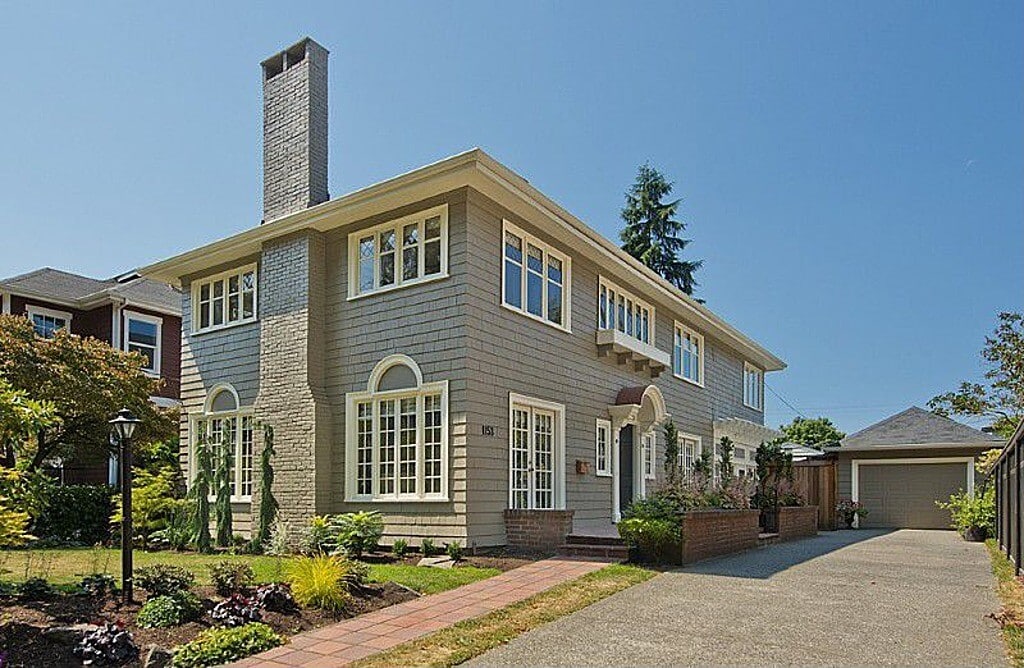(206) 258-6676

What is Back-Brushing?

Exterior Painting Tips: Back-Brushing
As the painting industry has evolved, airless sprayers have become more and more prominent for exterior painting. The benefits of using an airless sprayer include the ability to paint larger areas in less time, and the uniform appearance created by the sprayer’s even application. These factors make it the perfect choice when painting a large house. However, there are also some negative aspects to using an airless sprayer. Besides the extended period of time spent on prep and cleanup, paint applied with a sprayer can sometimes just “sit” on top of a surface rather than really fill in the ridges, nail holes, and cracks, which creates the best possible adhesion (this is particularly true of rougher painting surfaces). Although spraying creates a beautiful, even appearance, and can be applied in a thicker coating than the traditional brush-and-roll application, the sealing and adhesion isn’t always satisfactory on rougher substrates. This cannot be overlooked, because proper adhesion to a surface is vital to a quality, long-lasting paint job.
What is Back-Brushing?
As you have likely assumed, the solution to the dilemma described above is back brushing (or rolling)! By back brushing after spraying, we are essentially getting the best of both applications. Back brushing is the process of working the paint into a rougher surface after it has been sprayed. Back brushing should be done while the sprayed paint is still wet. With a brush or roller, work the paint into the cracks and crevices on the surface. This helps create a better bond to the surface, as you are now able to work the paint in to the smaller imperfections on the substrate.
When Should You Back-Brush?
Back-brushing is an important step in an exterior paint job for rougher surfaces. Examples of such substrates include cedar siding, T1-11 siding, and just about any type of surface that has become cracked and weathered over time and being exposed to the elements. That said, new, pre-sealed surfaces need not be back-brushed; the best example of this type of surface is the popular hardy plank siding.
Hiring a professional for your exterior home project
As a homeowner, you may not want to tackle a painting project as large and extensive as your home’s exterior. You may also lack equipment such as an airless sprayer to get the job done as efficiently as possible. Consider hiring a professional painting contractor like Sound Painting Solutions paint your exterior for you! Not only do we have all of the necessary equipment to complete the job, we also take all of the necessary steps to prepare and seal your surface, including covering your surrounding areas and plants, removing old and peeling paint, caulking, back brushing, and more! We will even include detailed descriptions of each step required for preparing your surface in our initial proposal. We also guarantee our work under our warranty, so you can feel confident even after we have finished.

Comments
John Payne
Hi Dylan,
Thank you for your valuable input.
Could you elaborate on back brushing
in regards to using both semi transparent and semi solid water base stains.? Would you add more stain to the applicator in back brushing? Do you
recommend using an applicator pad or
a car wash mop or stain brush? How about the best way to tackle lattice panel underpinning? Would you need to stain the backside? What is the best
way to stain PT square balusters and railings using semi solid water base stain? Thanks for your advice.
Hi John, you’ll want to apply enough stain to the brush such that it absorbs into the wood and edges. If you use a pad to apply the stain, you’ll want to brush it out afterward. I would recommend a 4-inch stain brush like this one: https://www.lowes.com/pd/Cabot/5013302699
You can only apply as much stain as the wood will take. After 15-20 minutes, remove the excess with a brush. Absorption will vary depending on the wood… I’d recommend taking this approach with the lattice. And if the back side is not exposed, you might be okay with leaving it alone, but I would recommend staining it if you are able to get behind it.
On the balusters… I would recommend using a roller and wiping off the excess with a brush. The roller makes for a faster application, but you’ll still want to lay it off with a brush.
Great post you have shared with us all and it will be helpful for so many peoples.
Need a quote for a complete exterior paint job.
Hi Dylan,
Thank you for your comment! I just sent you an email.